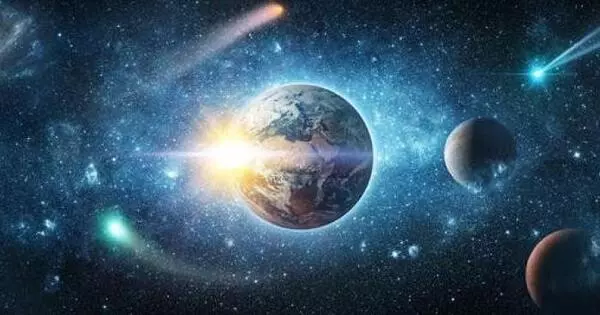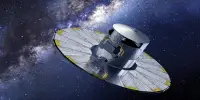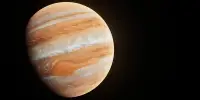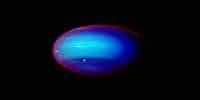Astronomers discovered a multiplanet system that is only 33 light-years away from Earth, making it one of the closest known multiplanet systems. At least two terrestrial, Earth-sized planets are most likely present in the system. Astronomers at MIT and other institutions have discovered a new multiplanet system in our galaxy that is only 10 parsecs, or about 33 light-years, from Earth, making it one of the closest known multiplanet systems to our own.
A small and cool M-dwarf star named HD 260655 is at the heart of the system, and astronomers have discovered that it is home to at least two terrestrial, Earth-sized planets. The rocky worlds are unlikely to be habitable because their orbits are relatively close, exposing them to temperatures too high to sustain liquid surface water.
Nonetheless, scientists are excited about this system because the proximity and brightness of its star will allow them to get a better look at the properties of the planets and any atmospheres they may have.
“Both planets in this system are each considered among the best targets for atmospheric study because of the brightness of their star,” says Michelle Kunimoto, a postdoc in MIT’s Kavli Institute for Astrophysics and Space Research and one of the discovery’s lead scientists. “Is there a volatile-rich atmosphere around these planets? And are there signs of water or carbon-based species? These planets are fantastic test beds for those explorations.”
The team will present its discovery today at the meeting of the American Astronomical Society in Pasadena, California. Team members at MIT include Katharine Hesse, George Ricker, Sara Seager, Avi Shporer, Roland Vanderspek, and Joel Villasenor, along with collaborators from institutions around the world.
Every planet that orbits a star will have a slight gravitational pull on its star. We’re looking for any slight movement of that star that might indicate a planetary-mass object is tugging on it.
Michelle Kunimoto
Data power
The new planetary system was initially identified by NASA’s Transiting Exoplanet Survey Satellite (TESS), an MIT-led mission that is designed to observe the nearest and brightest stars, and detect periodic dips in light that could signal a passing planet.
In October 2021, Kunimoto, a member of MIT’s TESS science team, was monitoring the satellite’s incoming data when she noticed a pair of periodic dips in starlight, or transits, from the star HD 260655.
She ran the detections through the mission’s science inspection pipeline, and the signals were quickly classified as two TESS Objects of Interest, or TOIs, or potential planets. The same signals were discovered independently by the Science Processing Operations Center (SPOC), NASA Ames’ official TESS planet search pipeline. Scientists usually plan to use other telescopes to confirm that the objects are, in fact, planets.
The process of classifying and then confirming new planets can take many years. With the help of archival data, that process was significantly shortened for HD 260655.
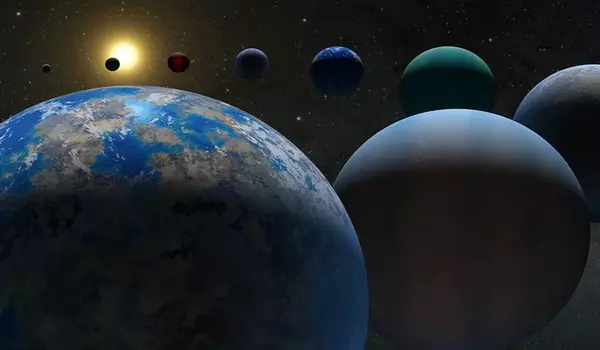
Soon after Kunimoto discovered the two potential planets orbiting HD 260655, Shporer checked to see if the star had been observed previously by other telescopes. As luck would have it, HD 260655 was discovered during a survey of stars conducted by the High Resolution Echelle Spectrometer (HIRES), which is part of the Keck Observatory in Hawaii. HIRES had been monitoring the star, as well as a number of other stars, since 1998, and the researchers were able to access the survey’s publicly available data.
HD 260655 was also included in another independent survey conducted by CARMENES, an instrument that is part of the Calar Alto Observatory in Spain. As these data were private, the team reached out to members of both HIRES and CARMENES with the goal of combining their data power.
Planetary pull
Finally, in about six months, this collaborative effort confirmed the presence of two planets near HD 260655. The researchers examined the star’s HIRES and CARMENES data to confirm that the TESS signals were indeed from two orbiting planets. Both surveys calculate the gravitational wobble of a star, also known as its radial velocity.
“Every planet that orbits a star will have a slight gravitational pull on its star,” Kunimoto explains. “We’re looking for any slight movement of that star that might indicate a planetary-mass object is tugging on it.”
From both sets of archival data, the researchers found statistically significant signs that the signals detected by TESS were indeed two orbiting planets. “Then we knew we had something very exciting,” Shporer says.
The team then looked more closely at TESS data to pin down properties of both planets, including their orbital period and size. They determined that the inner planet, dubbed HD 260655b, orbits the star every 2.8 days and is about 1.2 times as big as the Earth. The second outer planet, HD 260655c, orbits every 5.7 days and is 1.5 times as big as the Earth.
The researchers calculated the planets’ masses using radial-velocity data from HIRES and CARMENES, which is directly related to the amplitude with which each planet tugs on its star. They discovered that the inner planet is roughly twice as massive as Earth, while the outer planet is roughly three Earth masses. The density of each planet was calculated based on its size and mass. The inner, smaller planet has a slightly higher density than Earth, while the outer, larger planet has a slightly lower density. Based on their density, both planets are most likely terrestrial or rocky in composition.
Based on their short orbits, the researchers estimate that the surface of the inner planet is a roasting 710 kelvins (818 degrees Fahrenheit), while the outer planet is around 560 K. (548 F).
“We consider that range to be outside the habitable zone, where liquid water cannot exist on the surface,” Kunimoto says. “However,” Shporer adds, “there could be more planets in the system.” “Many multiplanet systems with five or six planets exist, particularly around small stars like this one. We’re hoping to find more, and one of them might be in a habitable zone. That’s a positive outlook.”
